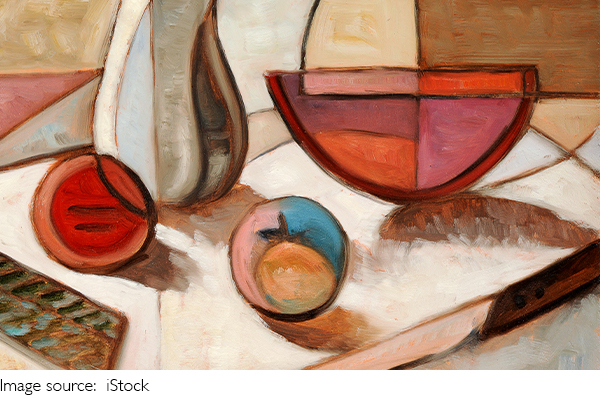Power of Minimalism

Have you ever noticed how a simple color palette, often just black and white, can bring so much depth and meaning to design?
There's something almost magical about it. We, as humans, have a natural attraction to simplicity, and minimalism—especially in black and white—has a way of stripping away distractions to reveal the essence of beauty and purpose.
Today, we explore the roots and power of this minimalist approach and how it continues to influence art, design, and even our daily lives.
What is Minimalism?
Minimalism, in its simplest form, is about reducing the unnecessary to focus on what truly matters. It's an approach that transcends just visual aesthetics—it's a lifestyle, a philosophy. At its core, minimalism seeks to eliminate clutter, both mentally and physically. When it comes to design, it embraces clean lines, open spaces, and the beauty of simplicity. And black and white? These two colors, despite being devoid of the complexity of hues, have the ability to convey profound messages and stir up powerful emotions.
The Aesthetic Appeal of Black and White
When we think of black and white, the first thing that comes to mind might be classic photography or timeless art. The absence of color allows for more focus on the composition and form, stripping away the noise of vibrant colors. In photography, the interplay of light and shadow creates mood and drama, evoking emotions that are often harder to capture in a colorful scene.
Similarly, in design, black and white can be bold yet soothing, stark yet sophisticated. It's a timeless combination that doesn't rely on trends, making it versatile and always relevant.
Minimalism in Art and Architecture
Minimalism has deeply shaped art and architecture. Artists like Fukuda Kodojin, with his serene ink landscapes, and Lee Ufan, known for his restrained brushwork, embraced purity and space. Architects such as Tadao Ando and Kazuyo Sejima pursued simplicity through clean lines and natural light. Every element—whether a single touch of ink or a bare concrete wall—is deliberate, emphasizing material, space, and intention.
In architecture, minimalism creates open, calming environments. Without excess, the focus shifts to the essence of the space itself—offering clarity and a retreat from the noise of modern life. This philosophy aligns with traditional Japanese aesthetics, where emptiness and simplicity hold deep meaning.
Minimalism in Our Lives
It's not just about art and design—minimalism has a profound impact on our daily lives, too. In today's fast-paced world, we often find ourselves overwhelmed with choices, commitments, and distractions. Minimalism helps us declutter, focus on the essentials, and prioritize what truly adds value to our lives.
This extends beyond our homes to our mental and emotional well-being. By simplifying, we reduce stress and create space for the things that matter—relationships, creativity, and personal growth. The minimalist lifestyle promotes mindfulness and intentionality, encouraging us to be present in the moment and appreciate the simple joys of life.
The Psychology Behind Black and White
Psychologically, black and white have deep meanings. Black often represents sophistication, power, and mystery, while white symbolizes purity, simplicity, and peace. When used together, they create a striking contrast that evokes both tension and harmony. It's a balance between opposites—light and dark, full and empty—that makes the minimalist aesthetic so compelling. The use of black and white in design can communicate seriousness and calmness, but it can also highlight the beauty of contrast and balance in life.

Conclusion: The Lasting Power of Simplicity
In the end, black and white are not just colors—they're symbols of the minimalist mindset. They show us that simplicity does not equate to emptiness; instead, it's the freedom to focus on what truly matters. As we navigate through the noise of modern life, embracing minimalism can help us find clarity, joy, and purpose. Whether it's in the art we create, the spaces we inhabit, or the lives we lead, the power of black and white, of simplicity, continues to inspire and shape our world.
So, have you ever experienced the transformative power of minimalism in your own life? How do you incorporate simplicity into your everyday routine? Let's take a moment to reflect and appreciate the power of simplicity.
-
 Scent Secrets To Luxe LifeWhich Perfume Feels Like A Pay Raise? Classy Vibes? Chic Picks? Let's Smell It Out!
Scent Secrets To Luxe LifeWhich Perfume Feels Like A Pay Raise? Classy Vibes? Chic Picks? Let's Smell It Out! -
 The Real Transylvania CallsMore than Dracula’s lair? Discover spellbinding castles, eerie forests, and secrets you weren’t supposed to know.
The Real Transylvania CallsMore than Dracula’s lair? Discover spellbinding castles, eerie forests, and secrets you weren’t supposed to know. -
 Measure Financial ProgressWondering If Your Money Moves Forward? Learn The Secrets To Measuring Progress Right Now!
Measure Financial ProgressWondering If Your Money Moves Forward? Learn The Secrets To Measuring Progress Right Now!